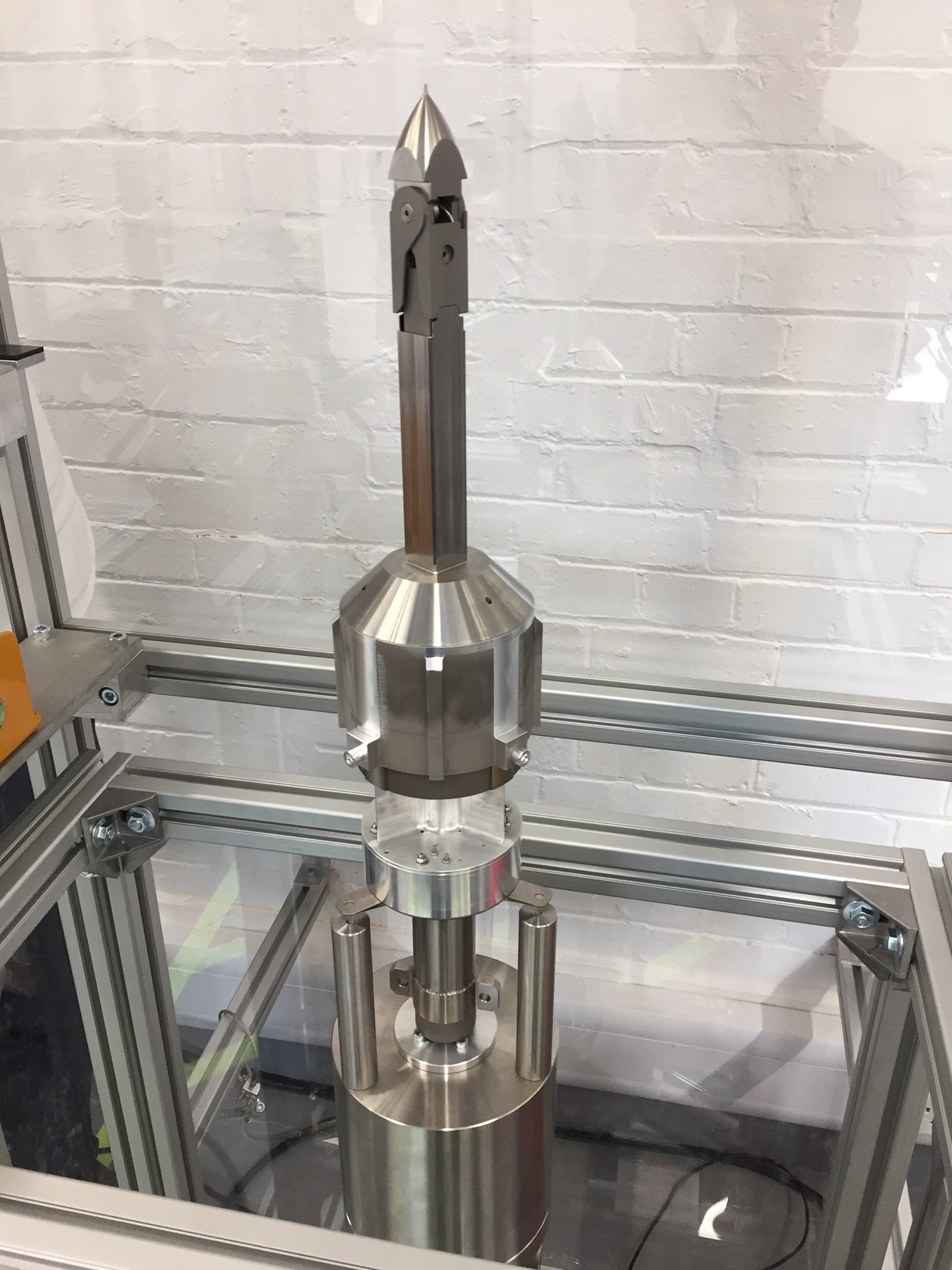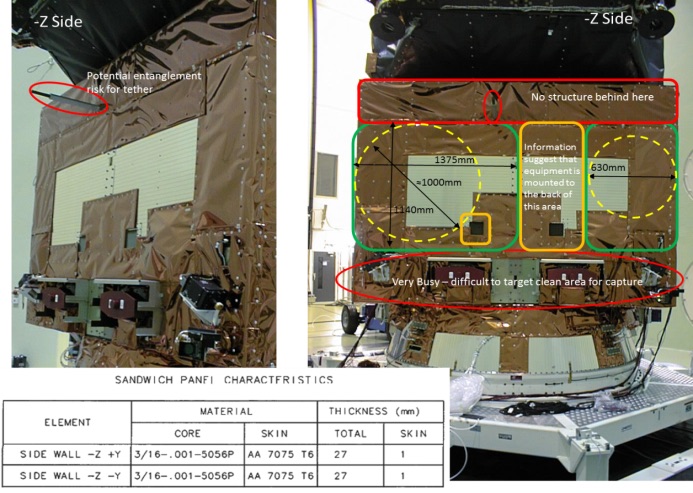High-Tech Harpoon Could Help Clean Up Space Junk
STEVENAGE, England — A space harpoon test went off without a hitch in a lab of European aerospace company Airbus last Thursday (March 15), suggesting that the technology could be on track to help clean up the ever-growing cloud of orbiting debris.
Engineers at Airbus' site here in Stevenage, a small town north of London, fired the 3.3-foot-long (1 meter) harpoon at about 56 mph (90 km/h) into a breadboard placed 5 feet (1.5 m) away. By the end of this year, the team plans to demonstrate a full-scale setup, firing a harpoon at a target 82 feet (25 m) away, as if it were capturing a real satellite in space.
"We are trying to demonstrate that we can successfully capture a piece of spacecraft with our harpoon design," said Alastair Wayman, advanced projects engineer at Airbus Defence and Space. "We have a really good basis for a flight design here to go to the next steps with the harpoon. It's one of the technologies that is easier to make next steps for." [Space Junk Cleanup: 7 Wild Ways to Destroy Orbital Debris]

The project is part of the European Space Agency's (ESA) Clean Space initiative, which, in the mid-2020s, aims to carry out an ambitious mission that would remove the defunct Envisat, the largest Earth-observation satellite ever built.
The harpoon is one of the technologies ESA is considering for tackling Envisat, an 8.8-ton (8 metric tons) monster that died in 2012 after 10 years of service. Envisat is now one of the largest and most troublesome pieces of space junk threatening spacecraft in low Earth orbit (LEO), experts say.
"To capture Envisat, the harpoon would have to be about a meter and a half long and [weigh] 2.5 kilograms [5.5 lbs.]," Wayman said. "In comparison to Envisat, it's pretty small."
The chaser spacecraft carrying the harpoon would attach itself to its target using the harpoon and then use its thrusters to drag Envisat into Earth's atmosphere for a controlled re-entry.
Get the Space.com Newsletter
Breaking space news, the latest updates on rocket launches, skywatching events and more!

ESA's Luisa Innocenti, who leads the Clean Space program, said last year that the agency is currently more inclined to use a robotic arm, as this technology could also be used for in-orbit servicing.
However, Wayman said that commercial opportunities for the harpoon technology will likely be plentiful even if it isn't used to deorbit Envisat.
"We are designing the harpoon around Envisat because it's the largest piece of debris," Wayman said. "If you can capture Envisat, you can capture everything. Active space-debris removal is getting more and more important. Every year that we don't achieve the target of deorbiting five large pieces of space debris, the situation gets worse, and we are more likely to have more collisions."
The world's space agencies agree that five large defunct satellites need to be removed from LEO every year to help prevent the Kessler syndrome, the unstoppable cascade of orbital collisions predicted by NASA scientist Donald Kessler in the late 1970s.
Wayman and his colleagues also designed and built a smaller harpoon system for the RemoveDEBRIS mission, an active debris-removal demonstration to be launched next month. As part of the mission, the harpoon will be fired into a fixed target extended from the main spacecraft on a boom. Wayman said the harpoon test is expected to take place in late 2018 or early 2019.
Follow us @Spacedotcom, Facebook or Google+. Originally published on Space.com.
Join our Space Forums to keep talking space on the latest missions, night sky and more! And if you have a news tip, correction or comment, let us know at: community@space.com.

Tereza is a London-based science and technology journalist, aspiring fiction writer and amateur gymnast. Originally from Prague, the Czech Republic, she spent the first seven years of her career working as a reporter, script-writer and presenter for various TV programmes of the Czech Public Service Television. She later took a career break to pursue further education and added a Master's in Science from the International Space University, France, to her Bachelor's in Journalism and Master's in Cultural Anthropology from Prague's Charles University. She worked as a reporter at the Engineering and Technology magazine, freelanced for a range of publications including Live Science, Space.com, Professional Engineering, Via Satellite and Space News and served as a maternity cover science editor at the European Space Agency.








